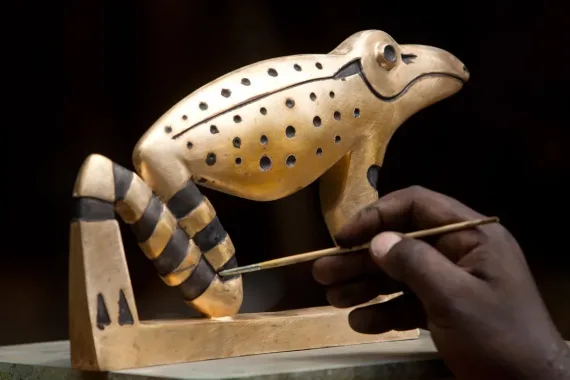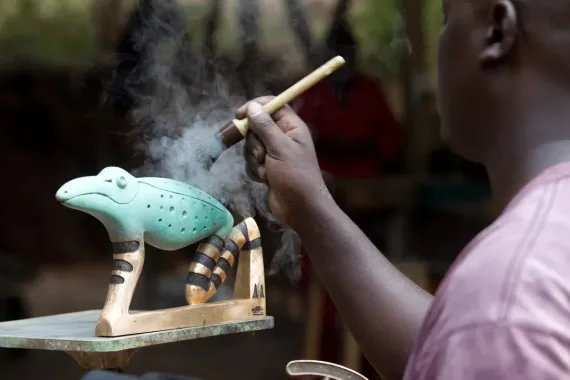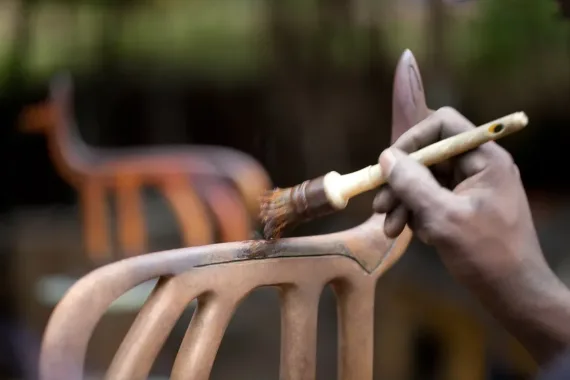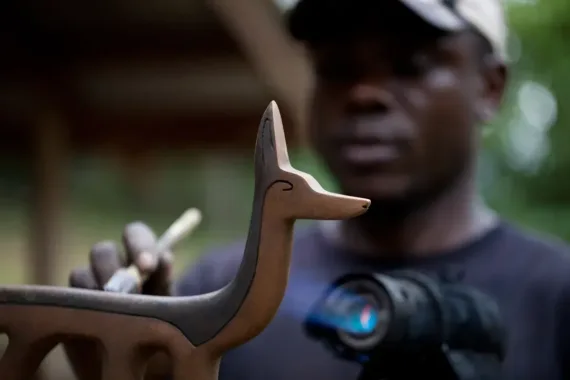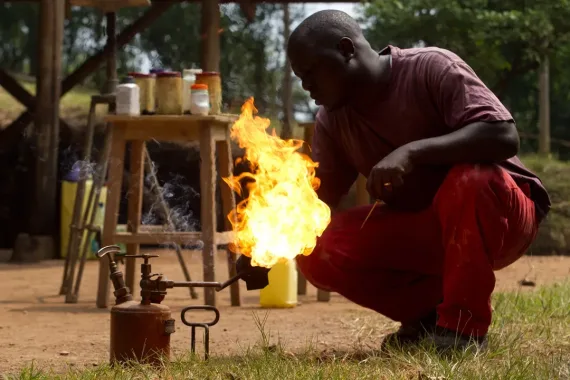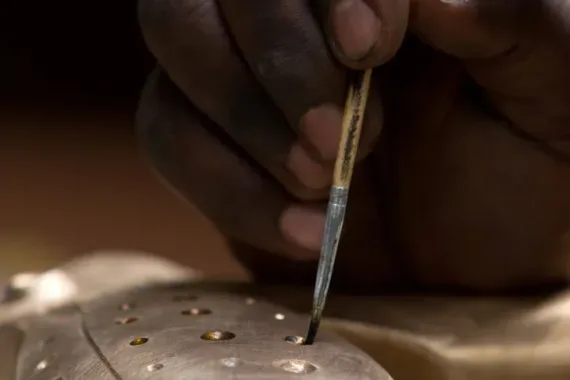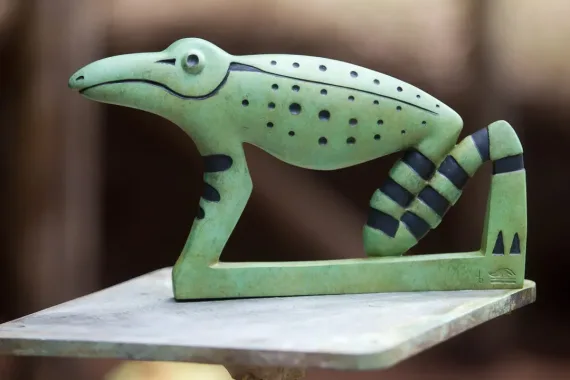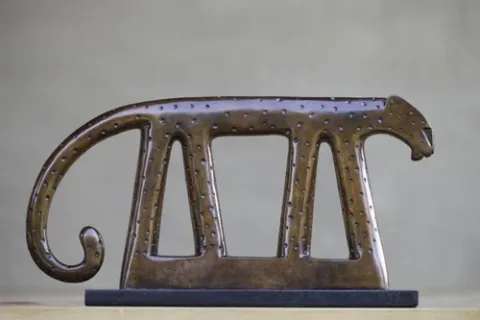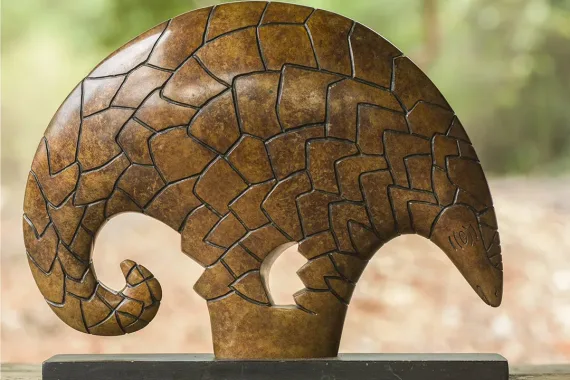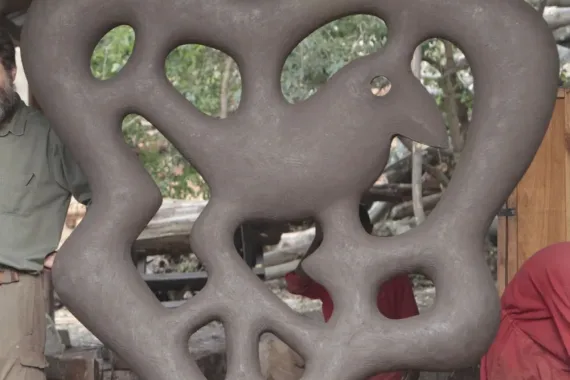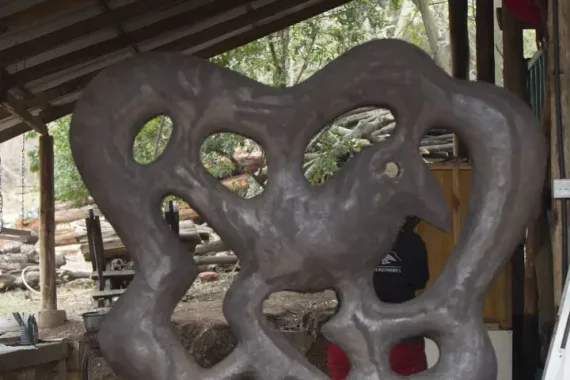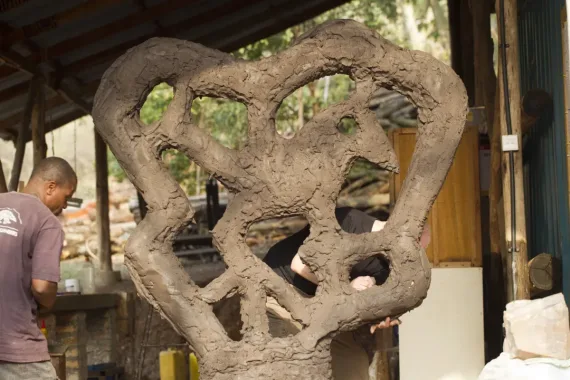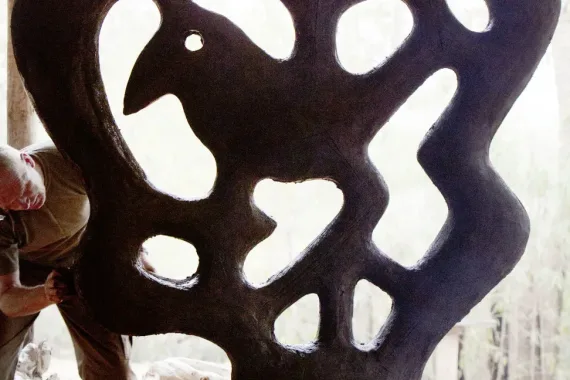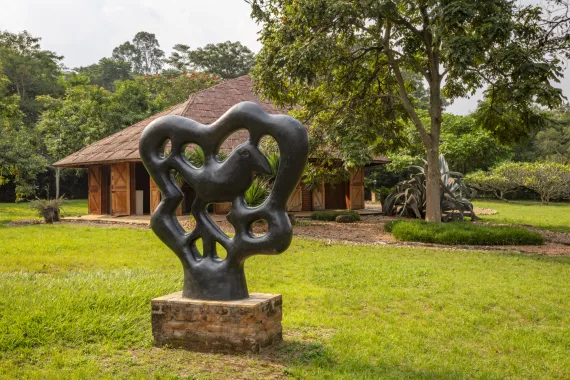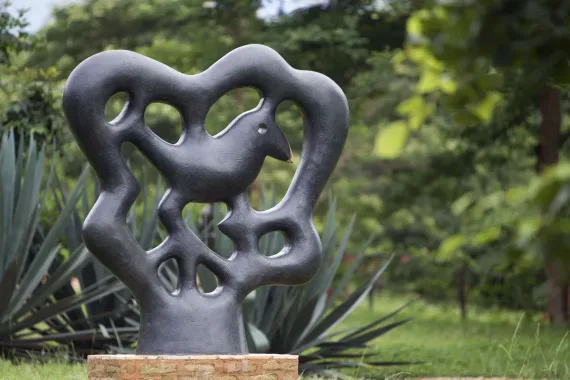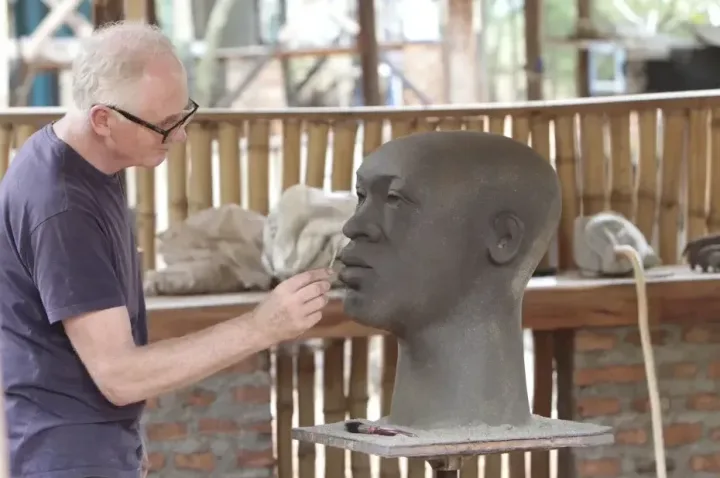
Clan Totems
Supported by the Foundation, established British sculptor Jon Buck has researched and designed a series of over thirty Clan Totems based on local traditions and tribal symbols. These include familiar Ugandan animals such as the lion, leopard and elephant as well as less-often seen creatures like the pangolin.
“My affiliation with the Ruwenzori Foundation began in 2005 when I was asked to undertake a bronze sculpture workshop at Makerere University in Kampala, Uganda. In asking the students to make simple animal sculptures suitable for casting into bronze, it became apparent that most individuals possessed an animal totem that symbolised their inherited membership of a clan.
Preliminary research could find no surviving ancient visual references to these clan totems and I was commissioned to make new designs for a series of animal totems that would be suitable for casting into bronze at the Foundation’s new Art Centre and Foundry near Kasese.
The first stage of this research was undertaken in November 2007. I travelled to Kampala with the remit to research into the derivation and origins of the totems that represent the fifty-six clans that make up Uganda’s most prominent tribe, the Baganda people. Initially I spent time at Makerere University, researching the customs of the tribal clans and their totemic animal emblems. Although these customs are still very much adhered to, any visual evidence of what form these totems might have taken no longer existed. To some degree that gave me licence to invent new sculptural forms to represent each clan. As the nature of the totems was intended to be symbolic, my designs had to be stylistic representations rather than naturalistic ones.
With little or no historical visual clues, searching for an aesthetic that was capable of representing the individual creatures but at the same time would be emblematic enough to act as the clan’s totem was a difficult task. In addition, in order to make the casting process as simple as possible, the sculptures needed to be dynamic but reduced to uncomplicated forms. Although historically there is little evidence of traditional sculpture in Uganda the applied arts such as pottery and basket making still continue. These crafts show a strong preference for a simple geometry and in the north of the country and in neighbouring countries that border this area there is still a strong culture of making small portable headrests made within this same reduced aesthetic. Some of these headrests reminded me strongly of my own sculptures of simplified animal forms and it was on this basic format that I decided to base the totem series.”
Bird In The Bush
“This sculpture was commissioned in February 2014 by the Foundation for its Sculpture Park in Uganda. My image celebrates the achievement of the Foundation in returning its land, once derelict, back to an environment that is steadily becoming alive again with indigenous plants and wildlife. As the title suggests, it is literally bringing birds back to the bush.
Completed in 2015, this work also created one of the biggest challenges for Rwenzori Founders’ small and dedicated foundry team at the art centre. It was an enormous task with limited facilities available but during my two week stay we managed to build the sculpture in clay onto its full-size armature constructed ahead of my arrival by the team and then mould and cast the work into twenty individual bronze sections. On my return home, the foundry craftsmen were left to carefully join the bronze sections together to create the complete monumental work which was then finished and patinated.
One of the first pieces to be sited in the newly created Sculpture Park, Bird in the Bush is a tribute to the Foundation’s success in creating a centre of excellence for bronze casting, as well as recognising the work they are undertaking in restoring the surrounding natural environment.”

